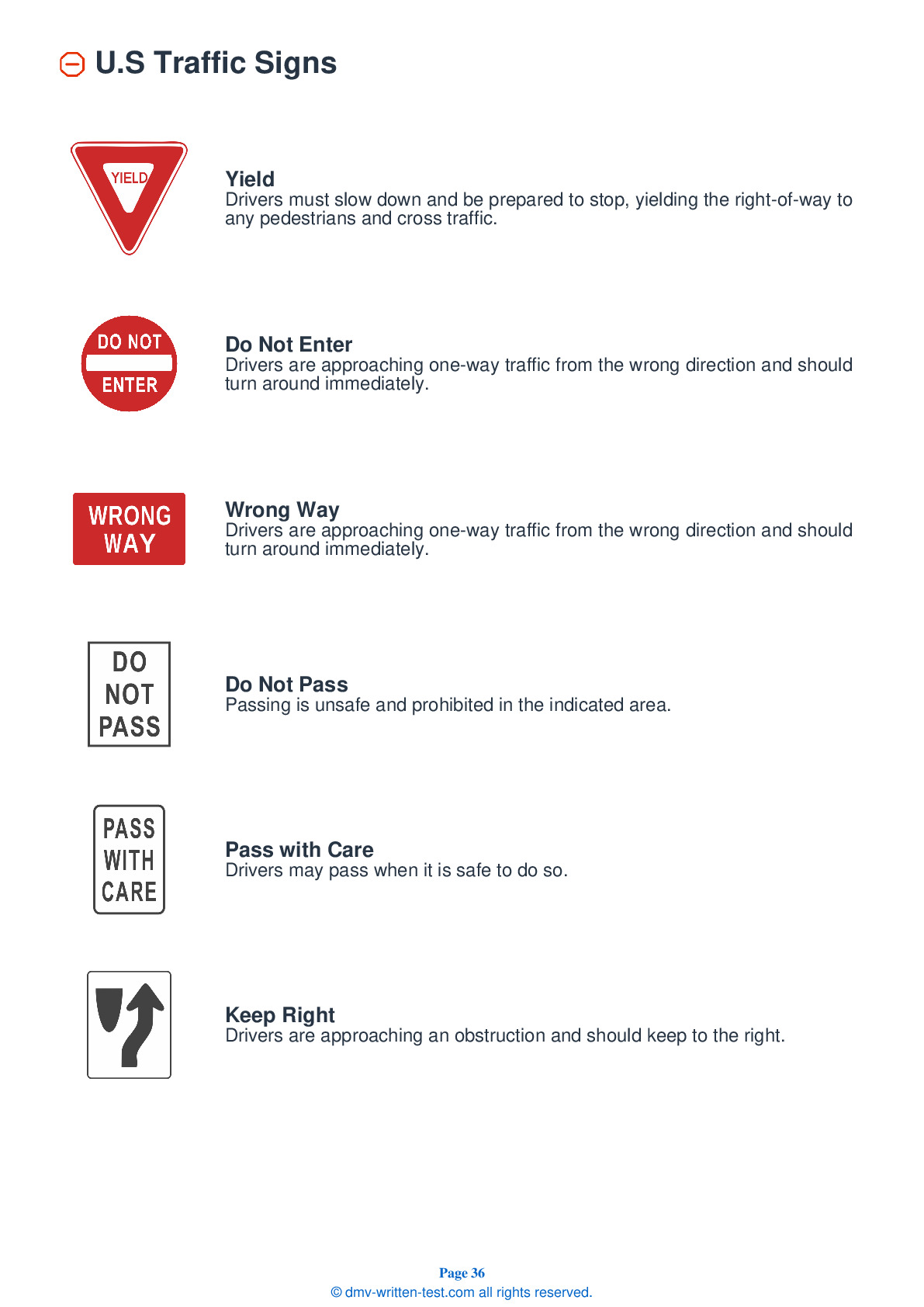2025 New Hampshire Permit Test 11
The following questions are from real DMV written tests. These are some of the actual permit questions you will face in New Hampshire. Each permit practice test question has three answer choices. Select one answer for each question and select "grade this section." You can find this button at the bottom of the drivers license quiz. For a complete list of questions and answers for New Hampshire please visit https://cheat-sheets.dmv-written-test.com/en/new-hampshire/car.
Number of Tests
Number of Question
Passing Score
1. At a four-way stop:
Explanation
At four-way stops, traffic from all four directions must stop. The first vehicle to reach the intersection should move forward first. If two vehicles reach the intersection at the same time, the driver on the left yields to the driver on the right.
2. A bicyclist who doesn’t obey traffic laws:
Explanation
All bicyclists have the same rights, duties, and responsibilities as drivers of motor vehicles. Motorists and bicyclists who do not obey traffic laws can be ticketed.
3. Larger vehicles have:
Explanation
The larger the vehicle, the larger the blind spots. Large trucks and SUVs have spots close to their rears that cannot be seen in their side or rearview mirrors.
4. You have the right-of-way when turning left on which of the following traffic signals?
Explanation
A green steady arrow means you may pass through the intersection in the direction that the arrow is pointing. Oncoming traffic is required to stop for turning traffic.
5. If traffic signals at an intersection are not functioning due to a power outage:
Explanation
If a traffic light at an intersection is not functioning due to a power outage, yield to other drivers in the same manner as you would when approaching a four-way stop. When it is your turn, proceed through the intersection with caution.
6. A driver approaching a flashing red traffic signal must:
Explanation
A flashing red light means that you must stop, yield to traffic and pedestrians, and go only when it is safe. At a railroad crossing, a flashing red light indicates that a train is approaching. Yield to the train, and go only when the lights have stopped flashing and all other active warning devices deactivate.
7. Which is not a factor in determining the distance that it takes to stop your vehicle?
Explanation
The distance required to stop your vehicle depends on perception time, reaction distance, and braking distance. This changes with speed and road conditions.
8. A driver can legally pass on the right side of another vehicle:
Explanation




